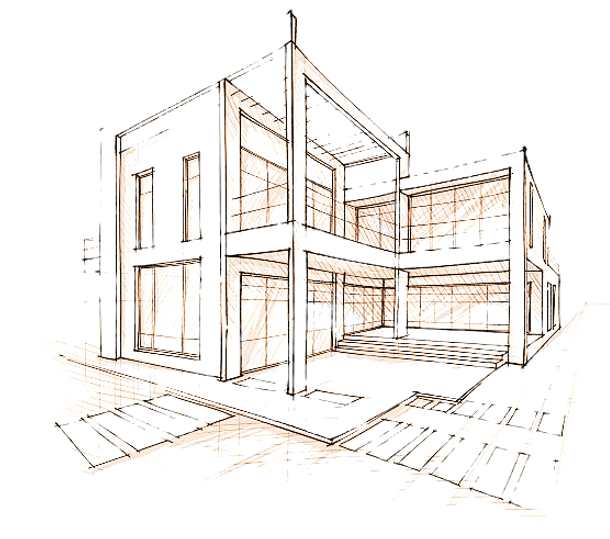
.png)
Buildings viewed up close by VG Expert
Your partners in construction expertise
Assistance VO in private and communal & Expertise construction errors and damage, also problems with contractors and architects, misleading sale of a home, technical advisor in legal proceedings, etc.
Please call or email us - 0472 59 18 98

Assistance VO in private and communal & Expertise construction errors and damage, also problems with contractors and architects, misleading sale of a home, technical advisor in legal proceedings, etc.
Please call or email us - 0472 59 18 98
En lees wat anderen zeggen over mijn aanpak en expertise.
Energy standards for new construction and renovation
New construction or renovations for which a planning permit or notification is required must comply with certain energy standards in Flanders. These standards are called the EPB requirements.
EPB requirements
EPB stands for 'Energy Performance and Indoor Climate'. Most buildings in Flanders must achieve a minimum level in terms of insulation, energy efficiency or energy performance and ventilation. Which requirements exactly apply depends, among other things, on: of the nature of the works and the date of the planning application or notification.
For new-build homes, for example, there may be EPB requirements for insulation, energy performance (expressed in a E-level), ventilation, minimum share of renewable energy, ... .
Obligations during the construction process
During the construction process, there are also a number of obligations for the client, the architect or the EPB reporter.
Appoint a reporter
Before starting work, you must notifier or client appoint an EPB reporter. That reporter can be the designing architect, but also another architect or engineer. The reporter will monitor and report during the construction process whether the energy standards are met. For building applications from 2006 you must also ventilation reporter to appoint. The ventilation reporter can be your EPB reporter or another person.
Submitting the declaration of initiation
Follow-up of material and installation choices
During the works, all matters that influence the thermal insulation, the energy performance and the indoor climate of the building are accurately recorded. In this phase you, as the client, retain the freedom to change certain material or installation choices. If the architect notices that (due to a poor choice of material or installation) the EPB requirements may not be met, he must report this to the person obliged to declare and the reporter.
Submitting the EPB declaration
After the construction work, the reporter prepares the EPB declaration. That's a calculation based on determinations, specifications, invoices,... The reporter finally submits the EPB declaration to the Flemish Energy Agency. Afterwards, the person obliged to declare will receive a signed copy.
Delivery of the energy performance certificate
After the EPB declaration has been submitted to the Flemish Energy Agency, the reporter also provides you with the mandatory 'energy performance certificate (EPC) Build off. That EPC Construction counts as proof whether or not the building complies with the energy performance regulations and states, among other things, the E-level.
Checks and fines
As a person who is obliged to declare a declaration, you can fine get if:
the declaration of initiation is not submitted (on time)
the EPB declaration is not submitted (on time)
if one or more are not met EPB requirements , such as, for example, the maximum E level .
The greater the violation, the higher the fine.
The reporter can also be fined if it turns out that the EPB declaration does not correspond to the materials and techniques used.
Premiums
Is it awarded E-level of a new-build home significantly lower than the norm? Then that energy efficiency will be rewarded.
See also E-level
Houses
New-build homes in Flanders with a building application since 2006 must obliged achieve a certain E level. The maximum E-level applicable to your construction project is determined by the date of application for your urban development permit ('building application') or of the notification. The maximum E-level is becoming stricter. New homes must therefore be increasingly energy-efficient.
New construction (or equivalent) Maximum E-level
with date of planning application or notification for housing unit
from 2006 to the end of 2009 E100
from 2010 to the end of 2011 E80
from 2012 to the end of 2013 E70
from 2014 to the end of 2015 E60
from 2016 to the end of 2017 E50
from 2018 to the end of 2019 E40
2020 E35
2021 E30
Also for a major energetic renovation is there a maximum E-level:
Major energetic renovation Maximum E-level
with date of planning application or notification for housing unit
from January 1, 2015 E90
After the work you will receive an energy performance certificate ' EPC Bouw ' from your epb reporter or architect, which includes the E-level.
Fine if the E-level is too high
If the E-level of your home is higher than the maximum E-level corresponding to the year of your building application, you will be fined. The greater the violation, the higher the fine.
Premiums or Reductions
Based on the achieved E-level, you may be eligible for certain premiums or reductions.
Who a very energy-efficient new house builds (with a lower e-level than the standard), may be eligible for
the reduction of property tax for an energy-efficient new building of 50% (or even 100%)
(submitted for planning application no later than 31-12-2016) de E-level premium for energy-efficient new construction.
For major energetic renovations right away planning application from October 1, 2016 is there the reduction of the property tax for a major energy renovation of 50% (or 100%).
published by Information Flanders.
_edited_edited.png)
.png)






.png)


.png)